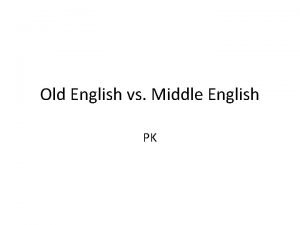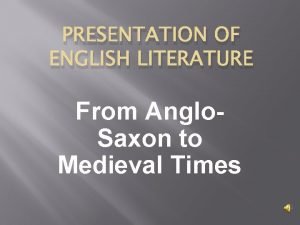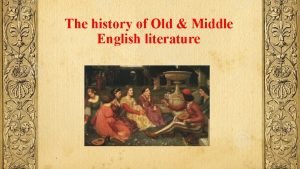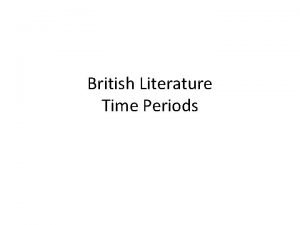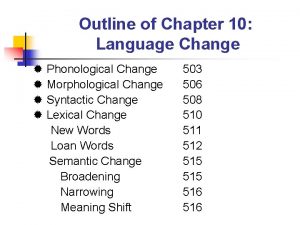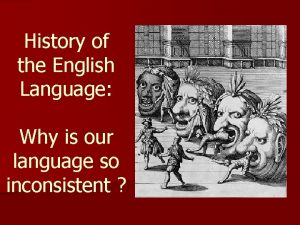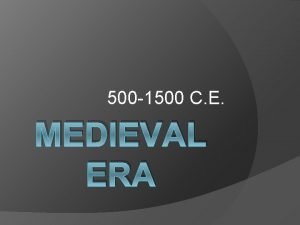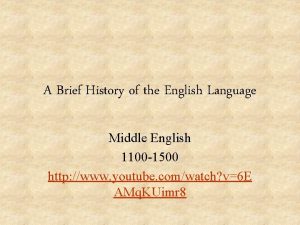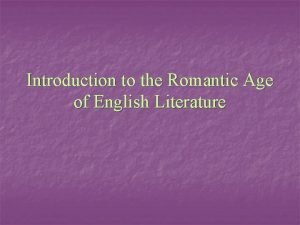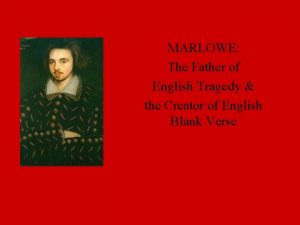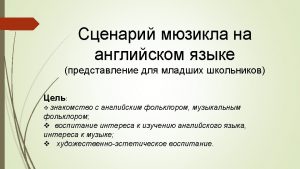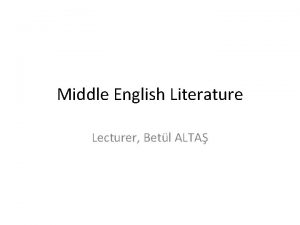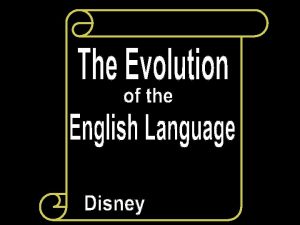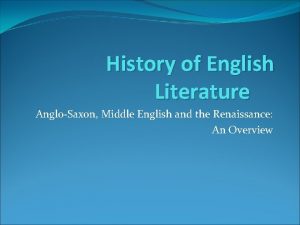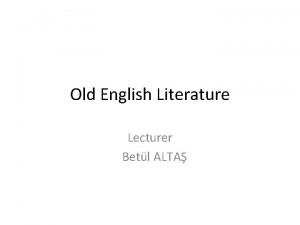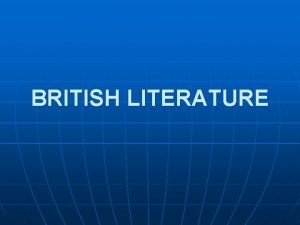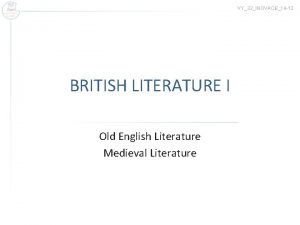The history of Old Middle English literature The













- Slides: 13

The history of Old & Middle English literature

The Anglo-Saxon brief History v Invaded east & southern England in the early 5 th century AD v The Anglo-Saxon Period was 550 to 1066 A. D. v Most Anglo-Saxons were Pagans who believed in many gods. v Anglo-Saxon culture changed over time and begin practicing Christianity. v Christianity spread to all Britain by 690.

an. GLO-Saxon Literature and The Epic v Stories were told orally in poem or song form v Epic poems were a very common form of Anglo-Saxon Literature. v An Epic is a long, narrative poem that celebrates a hero’s deeds. v Epic Poetry was one of the most common genres of literature during this period. v Nearly all Anglo-Saxon authors are anonymous. v Beowulf was the most famous epic story to come out of the Anglo. Saxon era. v A prologue of Beowulf, read in “Old English”

Characteristics of Anglo-Saxon Literature v Anglo-Saxon poetry used several devices, including: § § § § Metaphors Similes Alliteration Kenning Repetition Most stories were about heroic warriors prevailing in battle Stories were often filled with violence and gore

Old English Poetry Is of two types, the heroic Germanic pre-Christian and the Christian. It has survived for the most part in four manuscripts. 1. Junius aka Caedmon 2. Exeter Book 3. Vercelli Book 4. Nowell Codex Poetry represents the smallest amount of the surviving Old English text, just not much was written down or survived.

Modern Analysis v. The first widely accepted theory was by Eduard Sievers (1885) in which he distinguished five distinct alliterative patterns. Based upon accent, alliteration, the quantity of vowels, and patterns of syllabic accentuation. v. The theory of John C. Pope (1942) uses musical notations which has had some acceptance.

The Poets v. Most Old English poets are anonymous; twelve are known by name from Medieval sources, but only four of those are known by their vernacular works to us today: • Caedom (mid 7 th century) • Saint Bede (c 672 -735 • Cynewulf (c 770 -840) • Alfred the Great (849 -899)

Aftermath of the Danish invasion v. Danes or Vikings attacked England in 1066, but Alfred the Great defeated them and forced them to accept Christianity. v. King Alfred the Great (849 -899) restored the English culture. • Students • Texts • Anglo-Saxon Chronicle • Saved English • Widely know author

Transition v. Battle of Hastings v. Norman Conquest of 1066. v. French 3 rd language in England. v. Mixture of Old English and Anglo-Norman referred to as Middle English.

Anglo Norman Literature The most flourishing period of Anglo-Norman literature 12 th century to first quarter of the 13 th. Geoffrey Chaucer known as the father of English literature. “The Book of Kings, ” is the oldest substantial Anglo-Norman prose work in the 12 th century Anglo-Norman was rich in literature of legends of saints Anglo-Norman literature was well provided with romances. Marie de France, , the earliest named French woman poet Philippe de Thaon, or Thaün, One of the earliest writers in Anglo-Norman Tristan and Iseult, the most celebrated lovelegend of the Middle Ages

Characteristics of Middle English literature v Didactic literature is the most considerable, if not the most interesting, branch of Anglo. Norman literature. v Predominant genres: Lyric Ballad Romance Allegory Miracle, mystery, morality dramas

New England after the Normans Scholars often mark the end of the Anglo-Norman period with the French takeover of Normandy, completed by King Philip of France in 1204. At this point, the Anglo-Norman nobility lost their lands in Normandy.

Thank You
 Old pronouns
Old pronouns Old english literature presentation
Old english literature presentation Characteristics of anglo saxons
Characteristics of anglo saxons Old english period historical background
Old english period historical background Old english vs modern english
Old english vs modern english Old english vs modern english
Old english vs modern english Old english vs modern english
Old english vs modern english History of middle english
History of middle english English literature romantic period
English literature romantic period Father of english tragedy in english literature
Father of english tragedy in english literature What's your name? how old are you?
What's your name? how old are you? Once upon a time a little man running
Once upon a time a little man running Once upon a time there lived an old man and an old woman
Once upon a time there lived an old man and an old woman Once upon a time there lived
Once upon a time there lived
